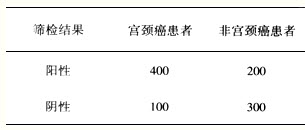
下载APP

【单选题】


When the first white men arrived in Samoa, they found blind men, who could see well enough to describe things in detail just by holding their hands over objects. In France, Jules Roman tested hundreds of blind people and found a few who could tell the difference between light and dark. He narrowed their photosensitivity(感光灵敏度) down to areas on the nose or in the finger tips. In 1960 a medical board examined a girl in Virginia and found that, even with thick bandages over her eyes, she was able to distinguish different colours and read short sections of large print. Rosa Kuleshova, a young woman in the Urals, can see with her fingers. She is not blind, but because she grew up in a family of blind people, she learned to read Braille to help them and then went on to teach herself to do other things with her hands. She was examined by the Soviet Academy of Science, and proved to be genuine, Shaefer made an intensive study with her and found that, securely blindfolded with only her arms stuck through a screen, she could tell the difference between three primary colours. To test the possibility that the cards reflected heat differently, he heated some and cooled others without affecting her response to them. He also found that she could read newsprint under glass, so texture was giving her no clues. She was able to identify the colour and shape of patches of light projected on to her palm or on to a screen. In rigidly controlled tests, with a blindfold and a screen and a piece of card around her neck so wide that she could not see round it, Rosa read the small print in a newspaper with her elbow. And, in the most convincing demonstration of all, she repeated these things with someone standing behind her pressing hard on her eyeballs. Nobody can cheat under this pressure. The first white men to visit Samoa found people who ______.
A.
were not entirely blind
B.
described things by touching them
C.
could see with their hands
D.
could see when they hold out their hands
参考答案:


参考解析:




刷刷题刷刷变学霸
举一反三

【单选题】When the first white men arrived in Samoa, they found blind men, who could see well enough to describe things in detail just by holding their hands over objects. In France, Jules Roman tested hundreds...
A.
were not entirely blind
B.
described things by touching them
C.
could see with their hands
D.
could see when they hold out their hands
【单选题】灵敏度是指
A.
试验检出阴性的人数占无病者总数的比例
B.
试验检出阳性的人数占有病者总数的比例
C.
筛检阴性者中真正成为非病人的可能性
D.
筛检方法能将实际有病的人正确地判为阳性的能力
E.
试验检出阳性的人数占无病者总数的比例
【单选题】灵敏度是指
A.
试验检出阳性的人数占有病者总数的比例
B.
试验检出阳性的人数占无病者总数的比例
C.
筛检阴性者中真正成为非病人的可能性
D.
试验检出阴性的病人占无病者总数的比例
E.
筛检方法能将实际有病的人正确地判断为阳性的能力
【单选题】患者,女性,18岁,右眼被羽毛球拍击中,视力下降两小时,检查:Vod:光感,光定位不准,眼压:5mmHg,角膜透明,球结膜下局部血肿,1/3前房积血,前房变深,瞳孔散大,对光反应迟钝,晶状体透明,玻璃体积血,眼底窥不清,B超提示:玻璃体混浊,脉络膜脱离,当前哪项处理最重要?( )
A.
球结膜切开探查
B.
X线检查
C.
止血
D.
抗炎、预防感染
E.
玻璃体手术
相关题目:

【单选题】感光法制版中,间接法的晒版原版是( )
A.
正向阳图
B.
反向阴图
C.
反向阳图
D.
正向阴图
【单选题】感光负片的密度范围一般为()。
A.
0.05~3.3
B.
0.05~2.4
C.
0.1~1.8
D.
0.1~4.4
【多选题】人民币发行70周年纪念钞动感光变镂空开窗安全线开窗出可见()
A.
古钱币图案
B.
¥50
C.
yuan
D.
长城
【多选题】引起X线照片感光不足的原因中()
A.
照射量不够
B.
滤线器切断X线照射
C.
电源电压过低
D.
电压降过大
【单选题】When the first white men arrived in Samoa, they found blind men, who could see well enough to describe things in detail just by holding their hands over objects. In France, Jules Roman tested hundreds...
A.
were not entirely blind
B.
described things by touching them
C.
could see with their hands
D.
could see when they hold out their hands
【单选题】灵敏度( )
A.
实际有病,试验阴性
B.
实际无病,试验阳性
C.
实际有病,试验阳性
D.
实际无病,试验阴性
E.
试验阳性,实际有病的可能
【单选题】灵敏度是指
A.
试验检出阴性的人数占无病者总数的比例
B.
试验检出阳性的人数占有病者总数的比例
C.
筛检阴性者中真正成为非病人的可能性
D.
筛检方法能将实际有病的人正确地判为阳性的能力
E.
试验检出阳性的人数占无病者总数的比例
【单选题】具有感光作用的结构是()
A.
视神经盘
B.
脉络膜
C.
视网膜
D.
巩膜
E.
角膜
【单选题】灵敏度是指
A.
试验检出阳性的人数占有病者总数的比例
B.
试验检出阳性的人数占无病者总数的比例
C.
筛检阴性者中真正成为非病人的可能性
D.
试验检出阴性的病人占无病者总数的比例
E.
筛检方法能将实际有病的人正确地判断为阳性的能力
【单选题】该试验的灵敏度为()。 A.60% B.80% C.40% D.20% E.30%
A.
某宫颈癌筛检试验的测定结果如下:
B.
C.


【单选题】视网膜感光最敏锐的部分是()。
A.
眼球后极部分
B.
视神经盘
C.
黄斑与视神经盘之间的中央凹
D.
黄斑外侧的部分
E.
黄斑区的中央凹
【单选题】感光片能起感光作用的是哪一层()
A.
保护层
B.
片基
C.
乳剂层
D.
防光晕层
【单选题】患者,女性,18岁,右眼被羽毛球拍击中,视力下降两小时,检查:Vod:光感,光定位不准,眼压:5mmHg,角膜透明,球结膜下局部血肿,1/3前房积血,前房变深,瞳孔散大,对光反应迟钝,晶状体透明,玻璃体积血,眼底窥不清,B超提示:玻璃体混浊,脉络膜脱离,当前哪项处理最重要?( )
A.
球结膜切开探查
B.
X线检查
C.
止血
D.
抗炎、预防感染
E.
玻璃体手术
【多选题】灵敏度的三要素有( )
A.
声程
B.
当量
C.
波幅
D.
增益
【判断题】PIN的灵敏度比APD更高
A.
正确
B.
错误

